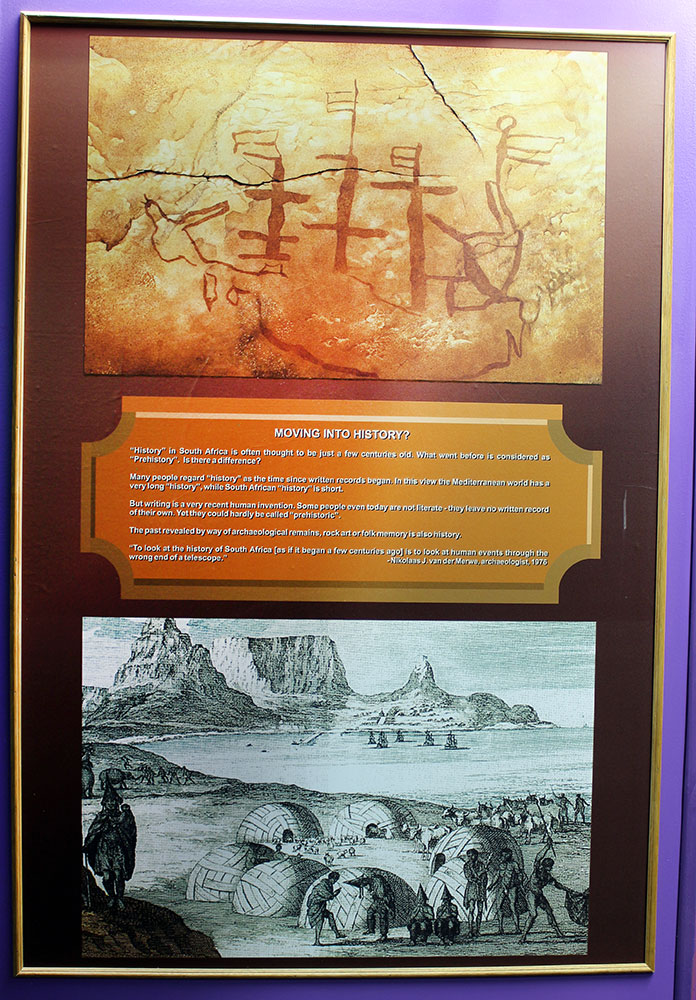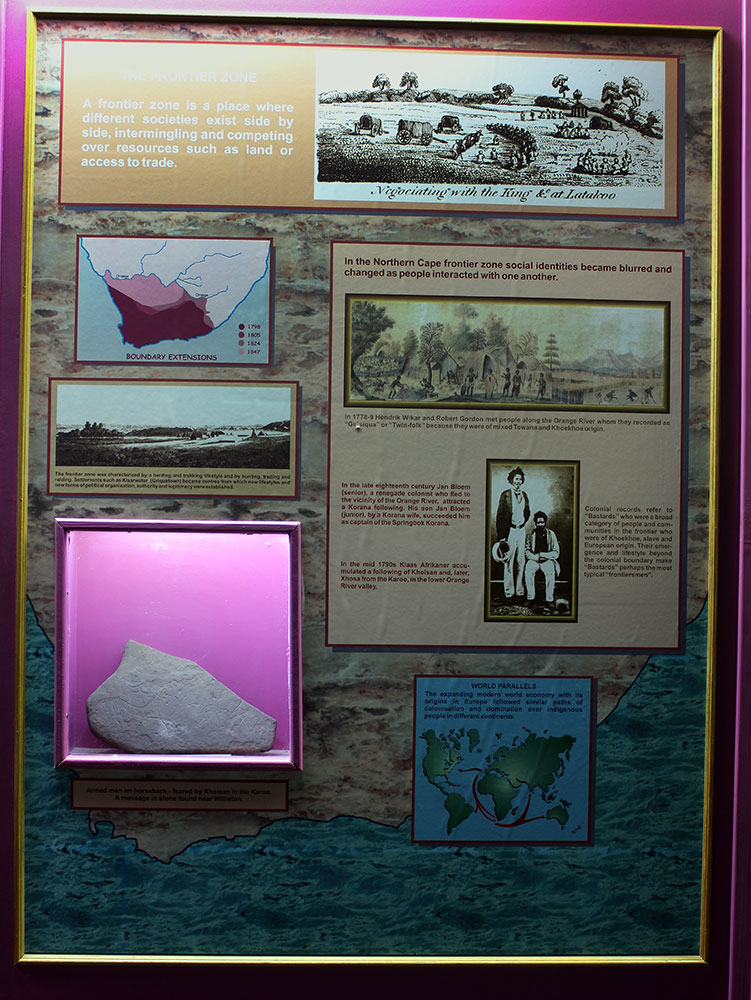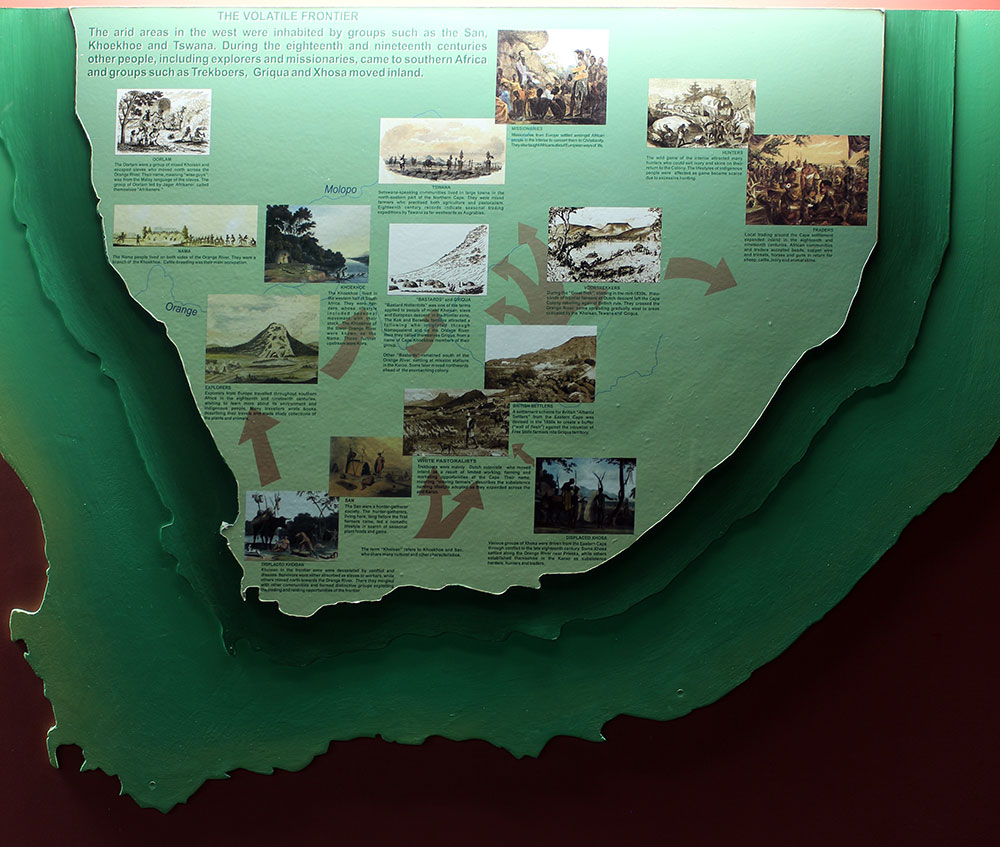A new frontier
- A new frontier
- https://museumsnc.co.za/new_site/wp-content/uploads/2021/04/new-frontier-thumb.jpg
- ALL CATEGORIES
- https://museumsnc.co.za/new_site/wp-content/uploads/2021/04/A-new-frontier-Voiceover.mp3

In 1488 Bartolomeu Dias, a Portuguese seafarer, reached beyond Mossel Bay, naming it Angra dos Vakairos – Bay of Cowherds – with reference to Khoikhoi herders seen on shore. In 1503 Antonio de Saldanha landed at Table Bay, where Jan van Riebeeck would establish a permanent V O C re-victualling station just short of a century and a half later.
This initial settlement was destined to expand, and it was not long before there was conflict between the Dutch and local Khoikhoi over Free Burgher seizure of their land. By the 1690s a Trekboer class was emerging at the Cape, which would have enormous consequences for the region that is now the Northern Cape. And, as early as 1661 rumours were noted at the Cape concerning “Briqua” – people later known to be Tswana.
A volatile frontier zone evolved in the Cape interior, with different societies existing side by side, and characterised by people living a herding and trekking lifestyle, together with hunting, trading and raiding. Social identities became blurred and changed as people intermingled, competing over resources such as land or access to trade. By the early nineteenth century settlements such as Klaarwater (Griquatown/Griekwastad) became centres from which new lifestyles and new forms of political organisation, authority and legitimacy were established.


